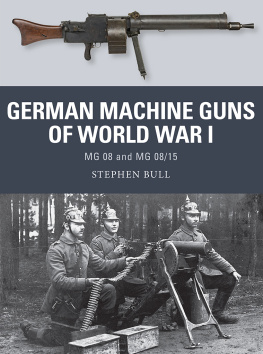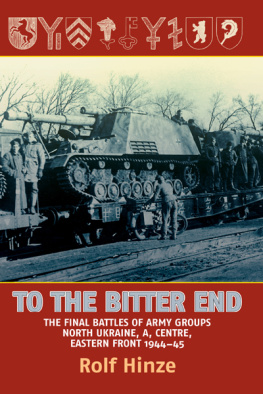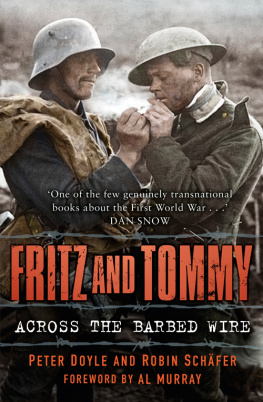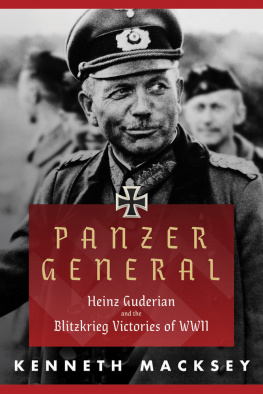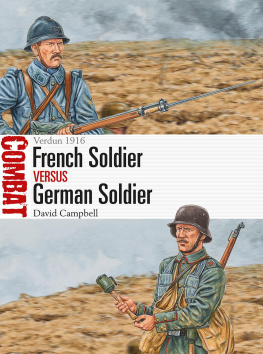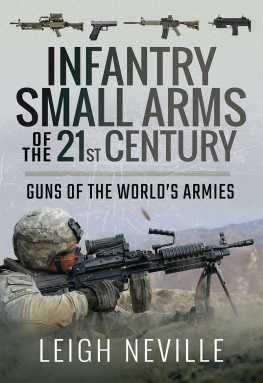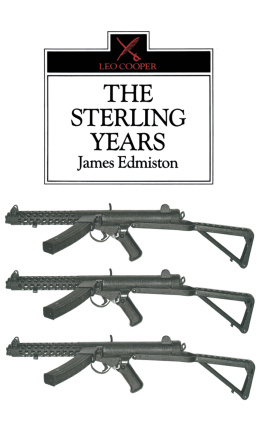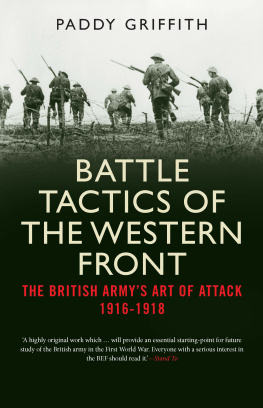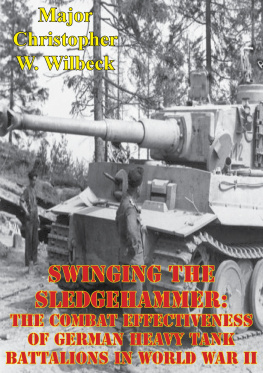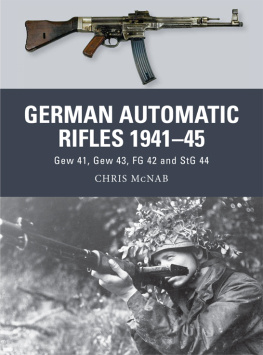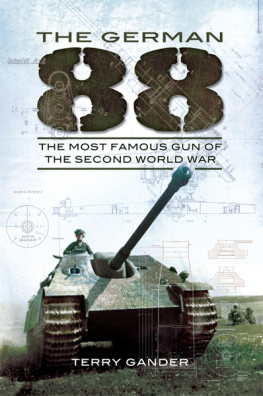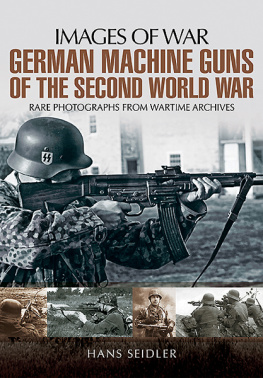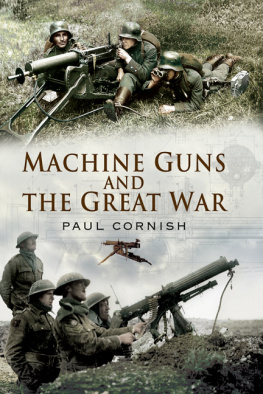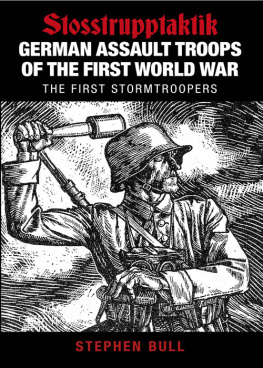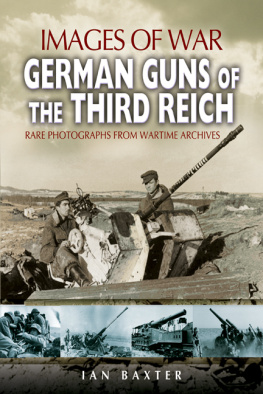
Author
Dr Stephen Bull is Curator of Military History and Archaeology for Lancashire Museums, with particular responsibility for local regimental collections, and is a consultant for the University of Oxford on World War I projects. His many books include several Osprey titles.
Illustrators
Johnny Shumate works as a freelance illustrator living in Nashville, Tennessee. He began his career in 1987 after graduating from Austin Peay State University. Most of his work is rendered in Adobe Photoshop using a Cintiq monitor. His greatest influences are Angus McBride, Don Troiani and Edouard Detaille. Johnny completed the battlescene artwork for this book.
Born in Malaya in 1949, Alan Gilliland spent 18 years as the graphics editor of the UKs Daily Telegraph, winning 19 awards in that time. He now writes, illustrates and publishes fiction (www.ravensquill.com), as well as illustrating for a variety of publishers, architects and developers (www.alangilliland.com). Alan completed the cutaway illustration for this book.
Acknowledgements
My real introduction to the Devils Paintbrush was in the 1980s, when Dolf Goldsmith visited the weapons department of the National Army Museum to undertake research for the debut edition of his ground-breaking book of the same name. Dolf sparked my interest in Maxims guns, and so to him is due the greatest thanks. Since then, and like many others, I am much indebted to the late Herbert Woodend, formerly of the old MoD Pattern Room; also to Mark Murray-Flutter of the Royal Armouries at Leeds; and Fergus Read and the team at what was, until recently, the Department of Exhibits and Firearms at the Imperial War Museum, London. I cannot also fail to mention Colonel John Downham and Jane Davies at the Lancashire Infantry Museum, who helped bring together a group of no fewer than four MG 08s and MG 08/15s as part of the World War I display in the Museum of Lancashire, Preston.
Editors note
Unless otherwise noted, the illustrations in this volume are drawn from the collection of the author. Metric measurements are used in this book. For ease of comparison please refer to the following conversion table:
1km = 0.62 miles
1m = 1.09yd / 3.28ft / 39.37in
1cm = 0.39in
1mm = 0.04in
1kg = 2.20lb
1g = 0.04oz / 15.43 grains
Front cover, above: MG 08/15 with drum magazine and muzzle booster, c.1918 ( Royal Armouries PR.7307). Below: MG 08 with Saxon infantry gun team, c.1916. The belt feeds from a single-belt 250-round box; in the foreground are two 500-round Modell 1911 boxes, each designed for two 250-round belts. The gun loader wears a leather dragging strap around his shoulder for manhandling the gun.
Title page: A Bavarian NCO with an MG 08 on a light anti-aircraft tripod mount, working from a pit, c.1918. The 500-round ammunition box has been crudely marked with a K, denoting that the rounds are armour-piercing. The gunner aims using the flip-up iron sight; suitable adjustment of the mount would also allow engagement of ground targets.


Glossary
Abteilung department, detachment or section
Ausbildungsvorschrift training provision, or instruction
Auslser trigger or release
Dampfrohr steam tube or pipe
Dreibein or Dreifu tripod
Einheitsmaschinengewehr universal machine gun
Felddienst field service
Flugbahn trajectory or flight path
Gewehrprfungskommission Rifle Test Commission
Gurt belt
Gurtfller belt loader or filler
Kasten box, chest or receiver
Kastendeckel box lid, receiver cover
Korn sight bead (also grain)
Lauf barrel, as in gun barrel
Lehrkursus training course
Mantel jacket
Mantelpanzer armoured jacket
Maschinengewehr machine gun
Maschinengewehr-Kompagnie machine-gun company
Maschinengewehrtruppen machine-gun troops
Patronen cartridges
Rckstoverstrker recoil, or muzzle, booster
Schild shield
Schiegestelle gun mount (literally shooting stand)
Schievorschrift shooting provision or instruction
Schlitten sled
Schlo lock
Schlohebel lock lever, crank handle
Sperrklinke Trommel pawl or ratchet drum
Unterrichtsbuch instruction book
Visier sight
Visierlinie line of sight
Waffenmeister armourer
Zielfernrohr telescopic or optical sight
Zufhrer feed

INTRODUCTION
In a moment the gun was in order and began to bark, recalled Georg Bucher of his time on the Verdun battlefield.
Gaaten pulled ammunition belts from the cases which Sonderbeck held ready for him. Tak tak tak tak tak tak ... we trembled with blood lust and fury as we mowed them down. Rows of them fell at a time but still the sky blue flood came nearer ... tak tak tak tak tak ... The crowd on the right! Riedel screamed. The barrel of the gun moved to the right, my eyes, which were as inflamed and blood thirsty as Riedels, followed the sights. Such were the Verdun battles ... Tak tak tak tak tak tak. The crowd dissolved in blood and death. Sonderbeck pushed a heap of empty cartridge cases out of the way. Riedel thrust a fresh belt into place, while Gaaten had another in readiness. Tak tak tak ... Would it never end? (Bucher 2005: 5152)

An early-production and now very battered MG 08 built by DWM in front-line service, c.1916. Its trench mount is a small tripod clamped to the water jacket, sprung so as to be flipped up and down quickly.

A typical battlefield MG 08 team, 1917. The gunner and loader are directed by an NCO commander, who would usually have been located a few metres from the weapon where he could both take cover and observe the impact of rounds. The two ammunition numbers, far left and right, would take cover further back or to the side, ready to give close support with the grenades and carbine evident here. Four men wear Tragegurten (dragging straps), and all five the

